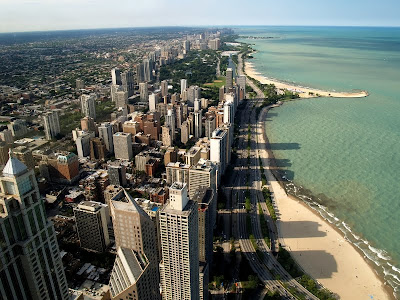Istanbul Airport is officially called Atatürk International Airport, after the founder of modern Turkey - Mustafa Kemal Atatürk. There are two terminals: one for international flights (A) and one for domestic flights (B). The International Terminal was opened in 2001 and is therefore quite modern.
Atatürk Airport is 24 kilometers southwest of Istanbul, in the European part. The second international airport in the city – Sabiha Gökçen International Airport – is on the other side of the Bosporus, in the Asian part. There are plans to build a new airport north of the city.
Prices are given here in the local currency, the Turkish (new) lire, €1.00 = 1.85 lire .
Local transport
Train
It is a five minute walk from the International Terminal to the metro station. The metro is a cheaper alternative than other means of transportation. A ticket only costs 1.10 lire. Route: CNR Expo Exhibition Center, Yenibosna, Ataköy/Sirinevler, Bahçelievler, Bakirköy/Incirli, Zeytinburnu (tram), Merter, Davutpasa, Terazidere, Otogar (bus station), Kartaltepe/Kocatepe, Sagmalcilar, Bayrampasa, Topkapi/Ulubatli, Emniyet/Fatih, Aksaray (tram and bus).
Car and bus
From the center of Istanbul the airport is accessible by highway E5 or by highway O1 and O2. The route to the airport is clearly indicated.
There are special shuttle buses from Havas to the center of Istanbul (Taksim square) and to the central bus station. The travel time is approximately half an hour. There are also buses going from the airport to Akmerkez (Etiler).
Car rental - Istanbul Atatürk International Airport
In the International Arrivals Hall there are counters for car rental companies: Airport Tours, Avis, Budget, Hertz, National, Sixt and Ülger. You can also reserve a rental car in advance using the service EasyTerra provides, they compare the rates of several providers in a single quote.
Taxi
Taxis are outside the Arrivals Hall. A ride to the center of Istanbul takes approximately 30 minutes and costs around 20.00-30.00 lire, between midnight and 06:00 there is a surcharge of 50%.
Airport Parking
On the north side of the terminal there is a parking garage with places for more than 7,000 cars. For the first hour parking you pay 6.00 lire, for three hours 8.00 lire, for 12 hours 14.50 lire and for the whole day 20.00 lire, a week of parking costs 90.00 lire, and two weeks costs 122.00 lire.
Services
Hotels
The Istanbul International Airport Hotel (tel: +90(0)212 465 4030) has 85 rooms, a fitness center, two conference rooms and a business center. Other hotels in the area of the airport are: Radisson SAS Conference and Airport Hotel (tel: +90(0)212 475 2323), Polat Renaissance Istanbul Hotel (tel: +90(0)212 663 1700) and the Airport Inn Hotel (tel: +90(0)212 663 7859). For more hotels and to reserve online you can go to Booking.com, they have a large range of hotels with great internet rates.
Shops and restaurants
The airport has a good range of shops, restaurants and bars. There are five Duty Free shops and a ‘bazaar’ that is inspired by the famous Istiklal Street in Istanbul.
Baggage
In the Arrivals Hall there is a counter where you can store baggage, for a normal suitcase you pay 12.00 lire per day, and for a large suitcase you pay 15.00 lire per day. The window for lost and found items is in the International Departures Hall.
Information
There are several information counters in both terminals, besides airport information the personnel can assist with reserving a hotel room, they also have brochures for tourist sights in Istanbul.
Business
In the International Terminal there are five VIP lounges and three meeting rooms. The Tepe Conference Hall has places for a maximum of 70 people, the Akfen Conference Hall is large with places for 200 people and the F Ergokmen Hall has a capacity for 50 people. Further information is available through the general telephone number.
Business services and meeting rooms are also available in the Istanbul International Airport Hotel and in the Radisson SAS Hotel (see Hotels).
Disabled facilities
The airport is accessible for the disabled. There are wheelchair ramps, adapted elevators and restrooms. After passport control there are electrocars (tel: +90(0)212 663 2550) available for the disabled, that are for gates that are far away. For assistance you can turn to the information counters.
Other services
There are banks, money exchange offices and ATM's. There is a post office in the National Terminal as well as the International Terminal. First Aid can be called upon through the general information counters or (tel: +90 212 663 64 00, extension 707). There are also baby changing rooms and children’s play corners.

Istanbul Airport View

Istanbul Airport View

Turkey Istanbul Airport View

Istanbul Airport View

Istanbul Airport View
 Tokyo City a municipality in Japan and part of Tokyo-Fu which existed from May 1, 1889 until its merger with its prefecture on July 1, 1943. The historical boundaries of Tokyo City are now occupied by independent special wards. The new merged government became known as Tokyo, Tokyo Metropolis, or ambiguously Tokyo prefecture.
Tokyo City a municipality in Japan and part of Tokyo-Fu which existed from May 1, 1889 until its merger with its prefecture on July 1, 1943. The historical boundaries of Tokyo City are now occupied by independent special wards. The new merged government became known as Tokyo, Tokyo Metropolis, or ambiguously Tokyo prefecture. tokyo city japan
tokyo city japan tokyo city japan
tokyo city japan




































